Feat of clay: modular column, by Tijmen Smeulders and Olivier van Herpt
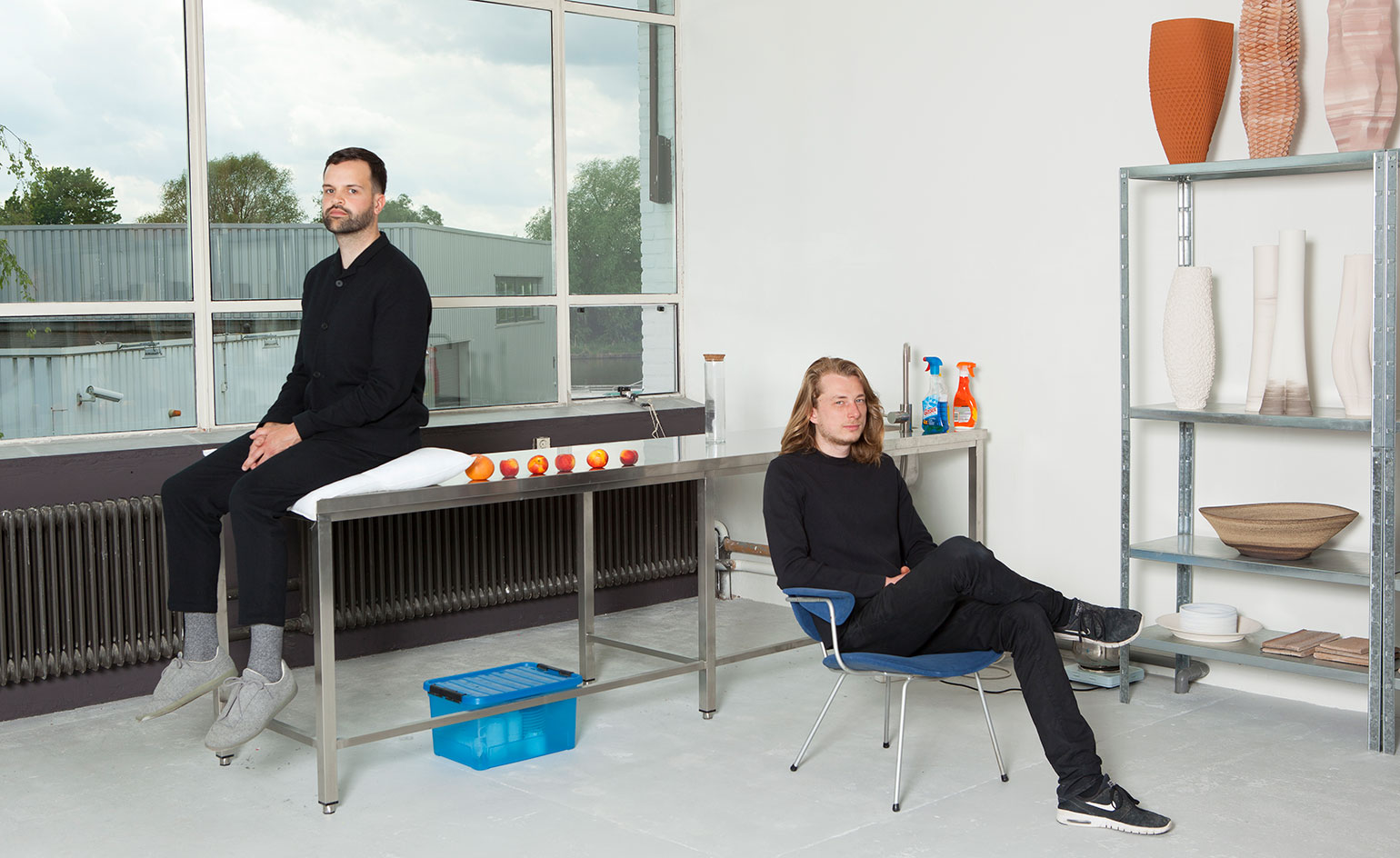
Despite being graduates of the same design school (the illustrious Design Academy Eindhoven), Tijmen Smeulders and Olivier Van Herpt have followed distinctly different paths.
Smeulders set up his Rotterdam studio upon graduating from the academy in 2013. His work, encompassing furniture, lighting and textiles, is sinuous and abstract, with clear influences from his teacher, Aldo Bakker. Van Herpt, meanwhile, finished his course at the Academy in 2015, and set up his studio in Eindhoven, focusing on developing a 3D-printing technique that could be applied to clay. After created specialized machinery, he has magicked up a growing collection of 3D-printed ceramic vessels with part-futuristic, part-archetypal shapes.
Both designers are obsessed with shape and both have created tightly edited and very personal portfolios. But it was their complementary differences that brought them together. ‘We have a common background, both coming from the Academy, but at the same time we have very different perspectives on design,’ explains Van Herpt. ‘Tijmen is more form-oriented, while I am more utility-oriented.’ The pair married their methods in one of the most painstakingly planned Handmade projects (completed according to a week-by-week schedule) in the exhibition’s eight-year history. The result is a sculptural piece that gives the spiritual theme of the exhibition a structural interpretation. ‘We saw a clear link between the column as an architectural element found in churches and temples, and this year’s subject,’ notes Smeulders. ‘This topic has traditionally been expressed in the strongest and most permanent way through architecture,’ echoes Van Herpt. ‘There are finer, more delicate religious objects, but the temple itself endures. Through time these structures remain, and they tell us of religions and societies long gone.’
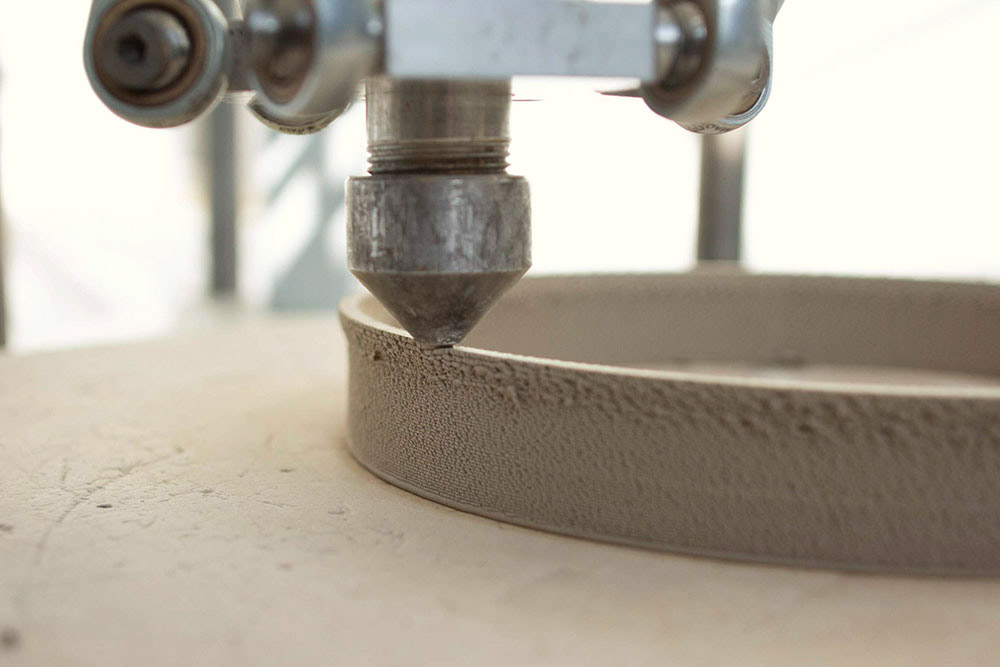
Printing the first prototypes for the modular column. Photography: Jaap Scheeren
The pair were also keen to explore just what ‘handmade’ means in contemporary design. ‘Tijmen and I discussed different concepts of handmade in the context of digital manufacturing,’ explains Van Herpt. ‘Our different approaches led us to meet in the middle, looking at a production process and how it creates form.’
The design of their modular column was directly informed by the restrictions of Van Herpt’s 3D-printing machines. The ambitious scale of their project meant that they had to create the piece out of individual modules. The circular shapes that compose the column are created as separate parts; each module size is identified by a specific colour and texture that suggest an alternative life as a useful domestic object. ‘We liked the idea of looking at the extruded clay in relation to the shape, we developed the circular modules to create a rim and an opening at the top, in order to make space to stack the next module,’ observes Smeulders. ‘We created a clear connection between technique and shape, enhanced by giving each module a different colour and texture according to its size: the bigger the container, the lighter its colour, the more evident the texture.’
All the circular modules have a 38cm diameter but come in different heights: a small module functions as a box; a taller one, or two combined, may make a coffee table; three make a storage space. ‘This can be continued until the piece transforms from a domestic to an architectural scale. I like the open character of the design; it asks to be interpreted by its user,’ says Smeulders.

Printing the first prototypes for the Modular column. Photography: Jaap Scheeren
The pair’s choice of method and materials presented its own problems, though. ‘The joints of the modular blocks were difficult to create, as they had to be completed very precisely, and shrinkage was also something to take into consideration if we were to build the final objects,’ explains Van Herpt, whose solo projects, while very intricate and detailed, are usually standalone.
Smeulders and Van Herpt are planning to continue their collaboration, as there are elements of the project that they still want to explore, such as the addition of glazes and pigments to enrich the design and add a new layer to the composition. But even though there are more steps to take before they can consider the piece final, they are both pleased with the result so far. ‘Many people who visited the Handmade exhibition thought the object was hand-sculpted from a block of clay,’ concludes Van Herpt. ‘It was a real compliment to have something made by a machine seem like it emerged directly from the hands of a sculptor.’
As originally featured in the August 2017 issue of Wallpaper* (W*221)
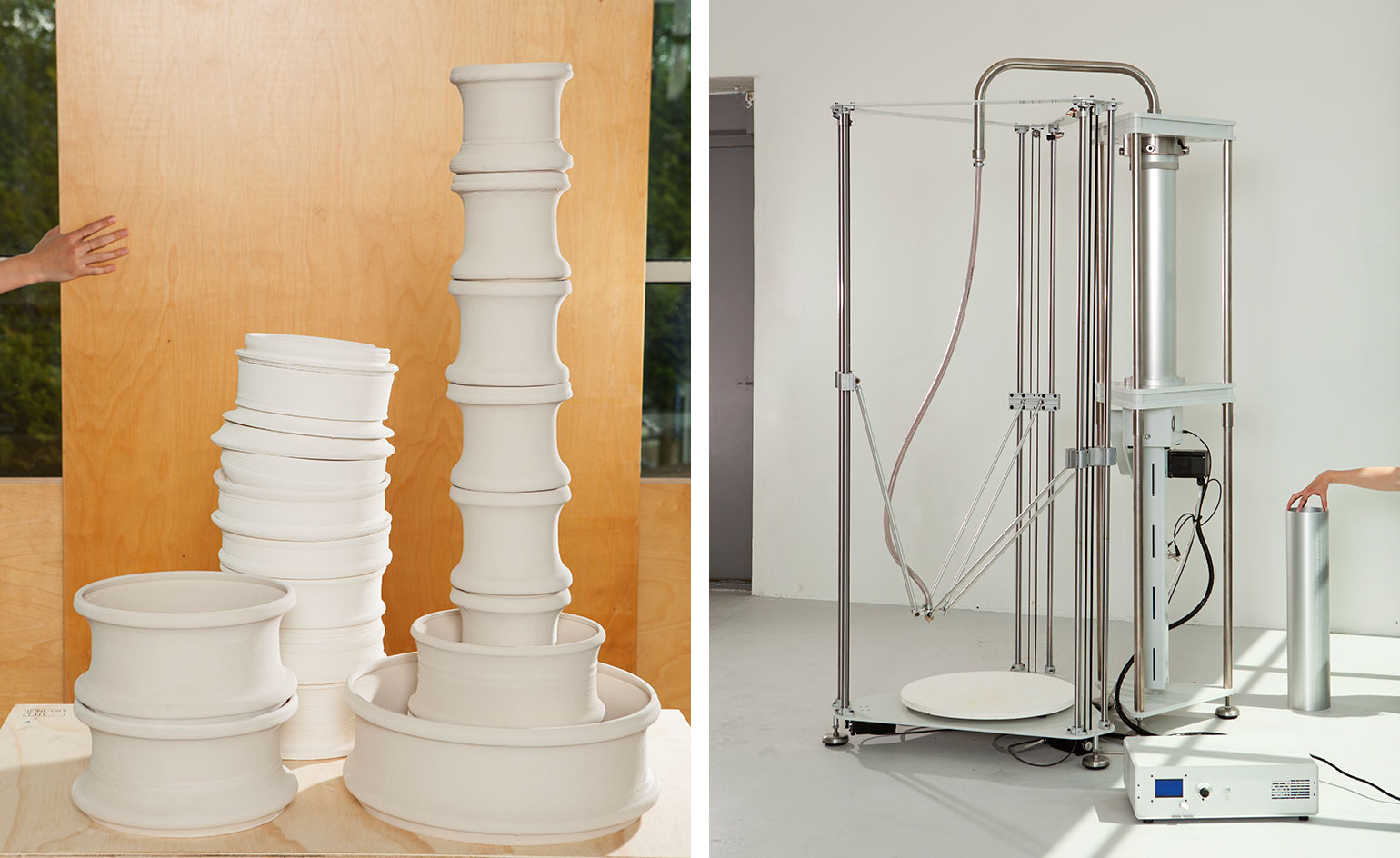
Left, the two Dutch designers produced clay prototypes in a variety of sizes before settling on a 38cm-diameter version that comes in different heights. Right, Van Herpt’s ceramic 3D-printing machine, which can produce objects up to 80cm tall with a diameter of 42cm
INFORMATION
For more information, visit the Tijmen Smeulders website and the Olivier van Herpt website
Receive our daily digest of inspiration, escapism and design stories from around the world direct to your inbox.
Rosa Bertoli was born in Udine, Italy, and now lives in London. Since 2014, she has been the Design Editor of Wallpaper*, where she oversees design content for the print and online editions, as well as special editorial projects. Through her role at Wallpaper*, she has written extensively about all areas of design. Rosa has been speaker and moderator for various design talks and conferences including London Craft Week, Maison & Objet, The Italian Cultural Institute (London), Clippings, Zaha Hadid Design, Kartell and Frieze Art Fair. Rosa has been on judging panels for the Chart Architecture Award, the Dutch Design Awards and the DesignGuild Marks. She has written for numerous English and Italian language publications, and worked as a content and communication consultant for fashion and design brands.
-
 A compact Scottish home is a 'sunny place,' nestled into its thriving orchard setting
A compact Scottish home is a 'sunny place,' nestled into its thriving orchard settingGrianan (Gaelic for 'sunny place') is a single-storey Scottish home by Cameron Webster Architects set in rural Stirlingshire
-
 7 colours that will define 2026, from rich gold to glacier blue
7 colours that will define 2026, from rich gold to glacier blueThese moody hues, versatile neutrals and vivid shades will shape the new year, according to trend forecasters
-
 In Norway, discover 1000 years of Queer expression in Islamic Art
In Norway, discover 1000 years of Queer expression in Islamic Art'Deviant Ornaments' at the National Museum of Norway examines the far-reaching history of Queer art
-
 Ones to Watch: Plaster Paris Studio unites brutalism and bohemia
Ones to Watch: Plaster Paris Studio unites brutalism and bohemiaDesigners Tessa Rose Vardy and Olivia Engelhardt draw inspiration from the urban landscape of Paris and the laidback warmth of the Balearics
-
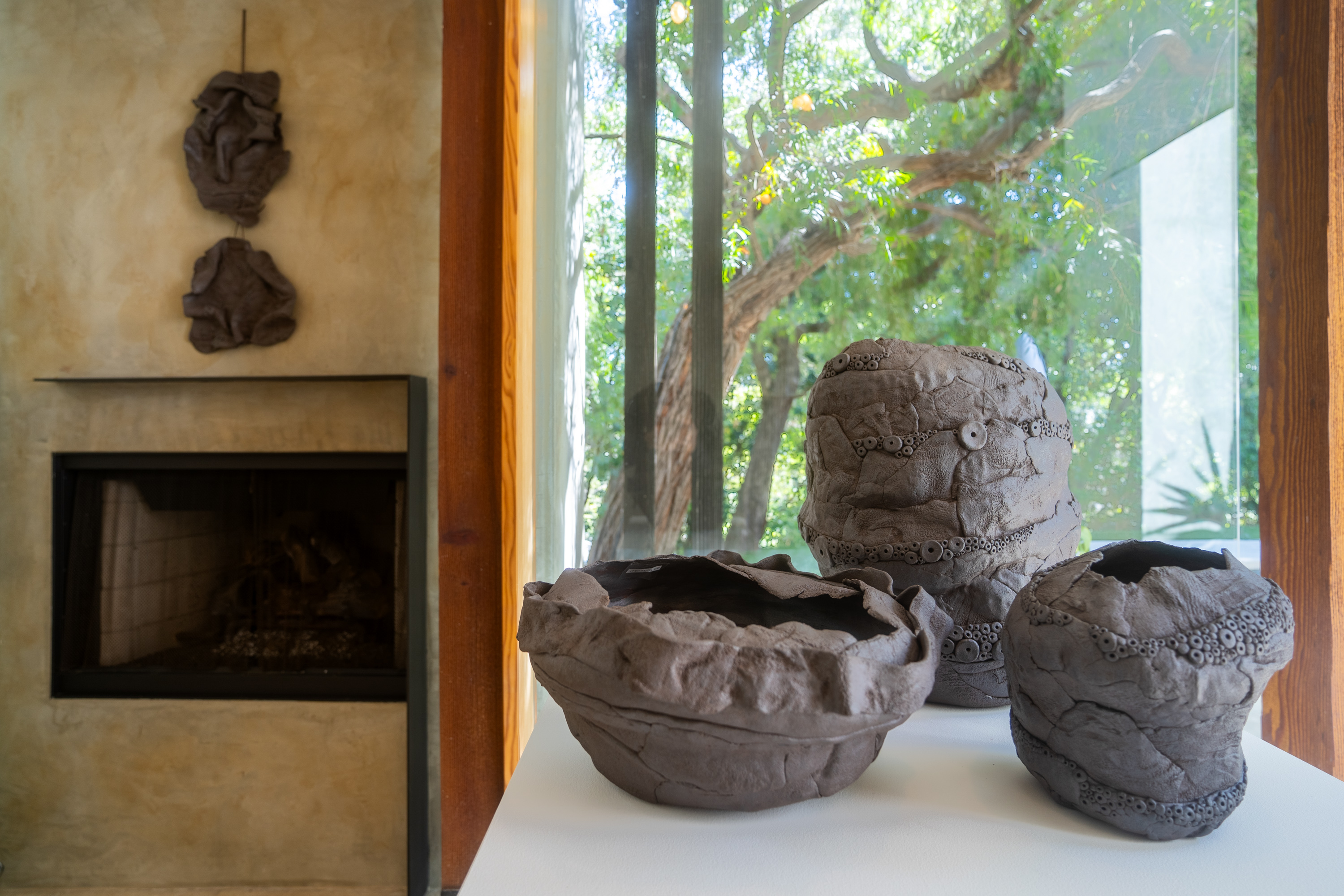 Lois Samuels’ ceramics invite us to find beauty in imperfection
Lois Samuels’ ceramics invite us to find beauty in imperfectionOn view at Twentieth in Los Angeles, the artist’s unglazed ceramics explore ‘life’s intricacies and magic’, she says
-
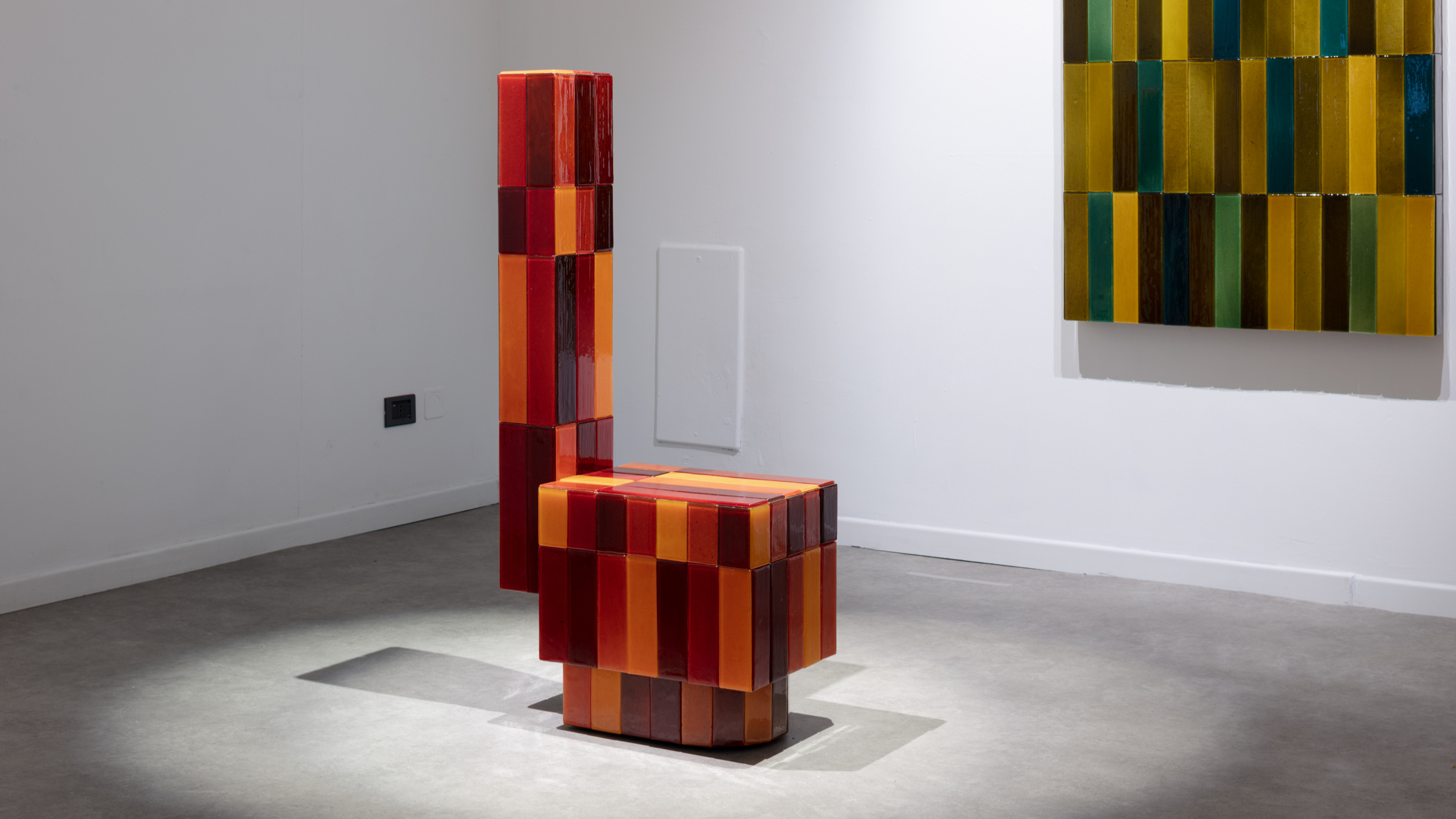 Tokyo design studio We+ transforms microalgae into colours
Tokyo design studio We+ transforms microalgae into coloursCould microalgae be the sustainable pigment of the future? A Japanese research project investigates
-
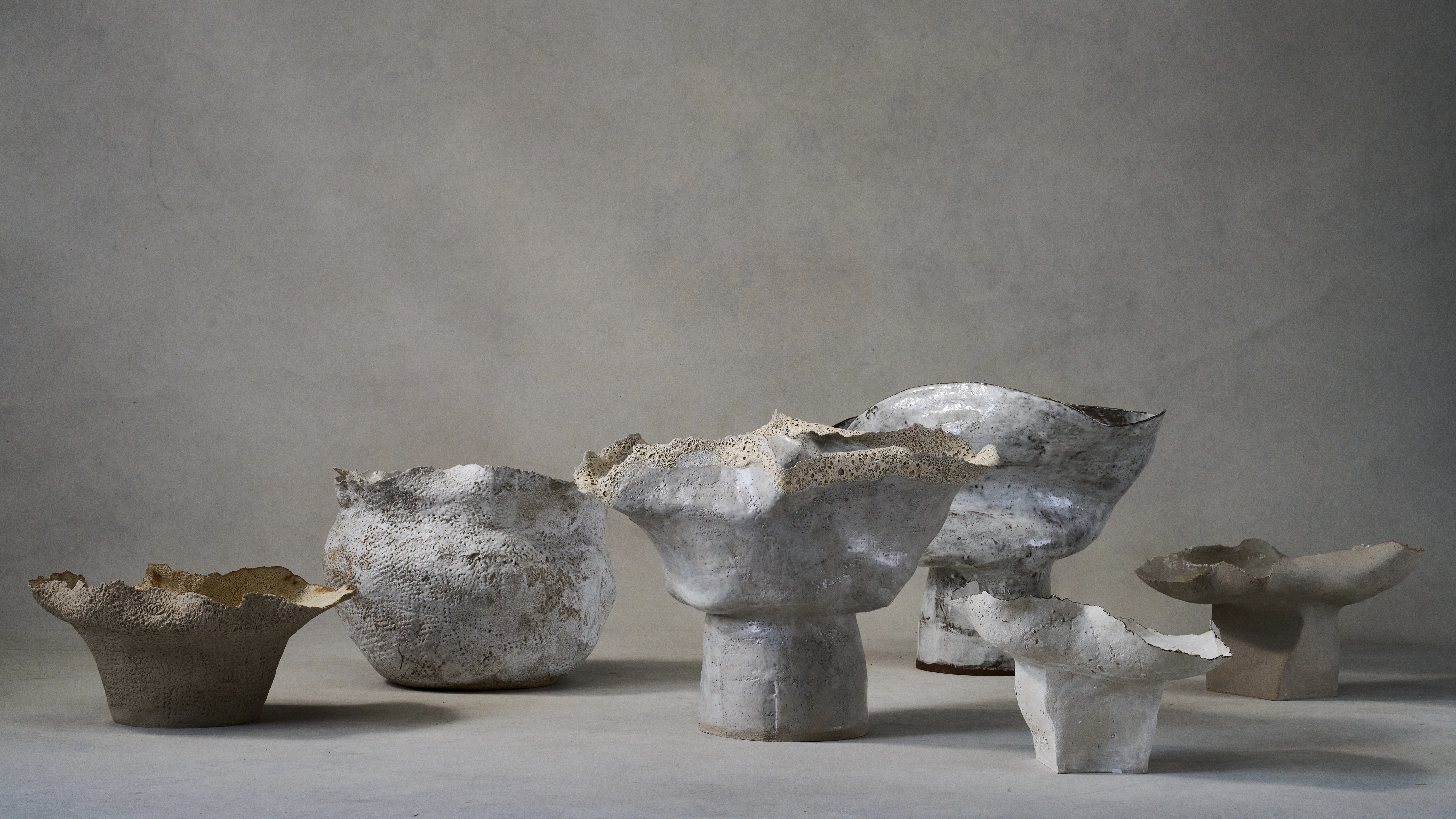 Ludmilla Balkis’ organic, earthy ceramics embody the Basque countryside
Ludmilla Balkis’ organic, earthy ceramics embody the Basque countrysideThe sculptor-ceramicist presents a series inspired by and created from found natural objects in a New York exhibition
-
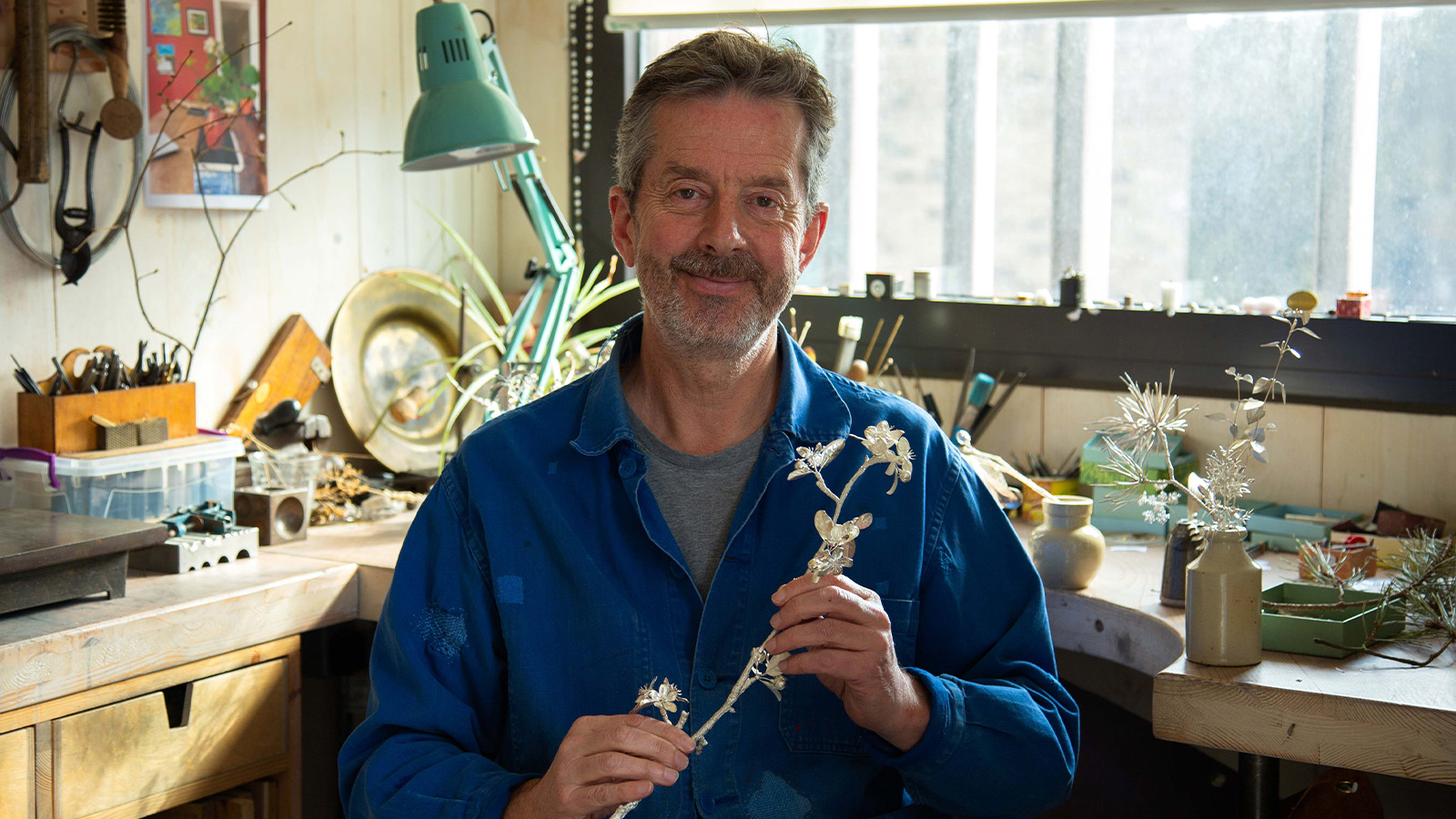 Nature sets the pace for Alex Monroe’s first sculpture exhibition
Nature sets the pace for Alex Monroe’s first sculpture exhibitionThe British designer hops from jewellery to sculpture for his new exhibition at the Garden Museum, London. Here, he tells us why nature should be at the forefront of design
-
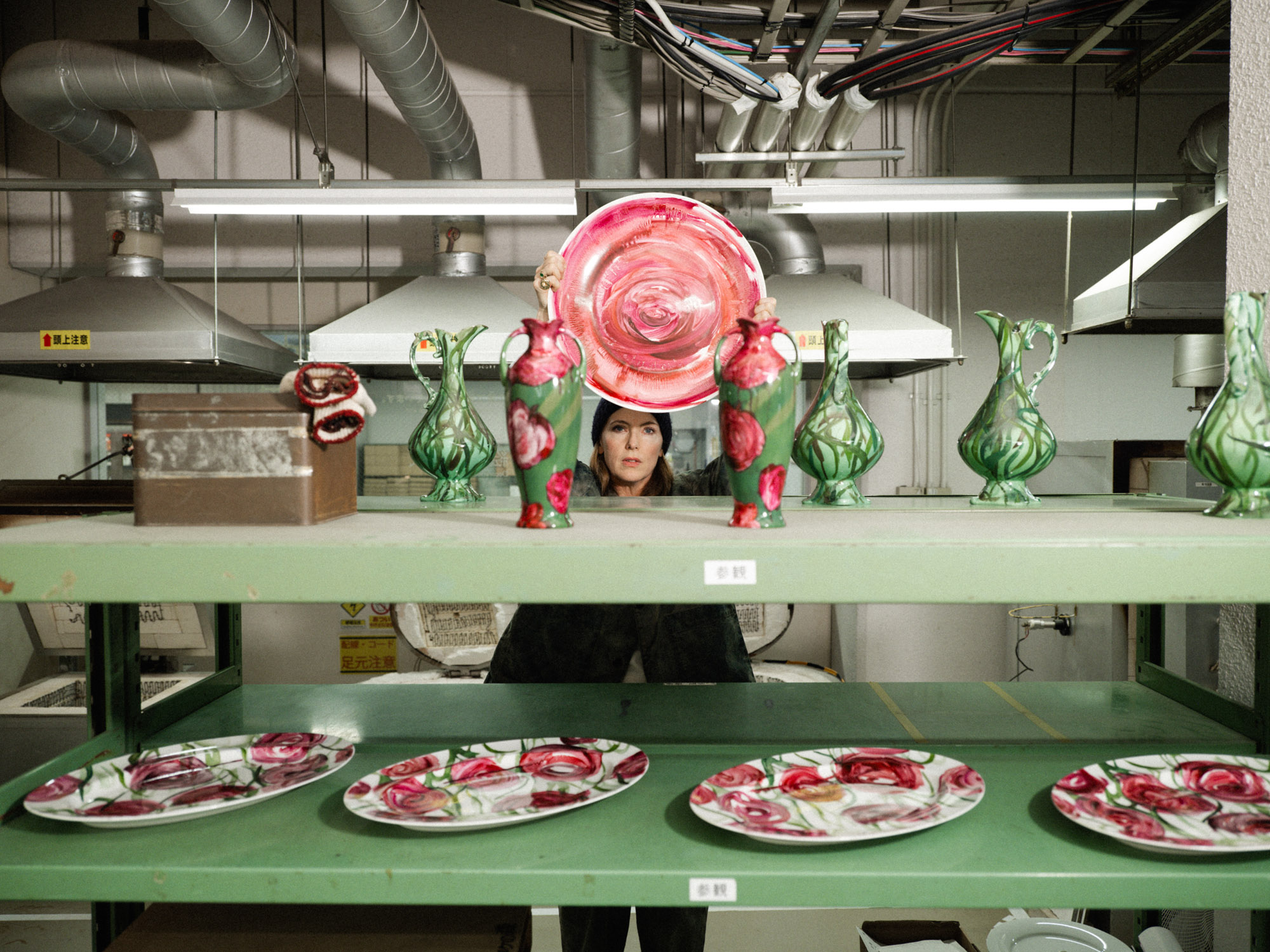 Faye Toogood comes up roses at Milan Design Week 2025
Faye Toogood comes up roses at Milan Design Week 2025Japanese ceramics specialist Noritake’s design collection blossoms with a bold floral series by Faye Toogood
-
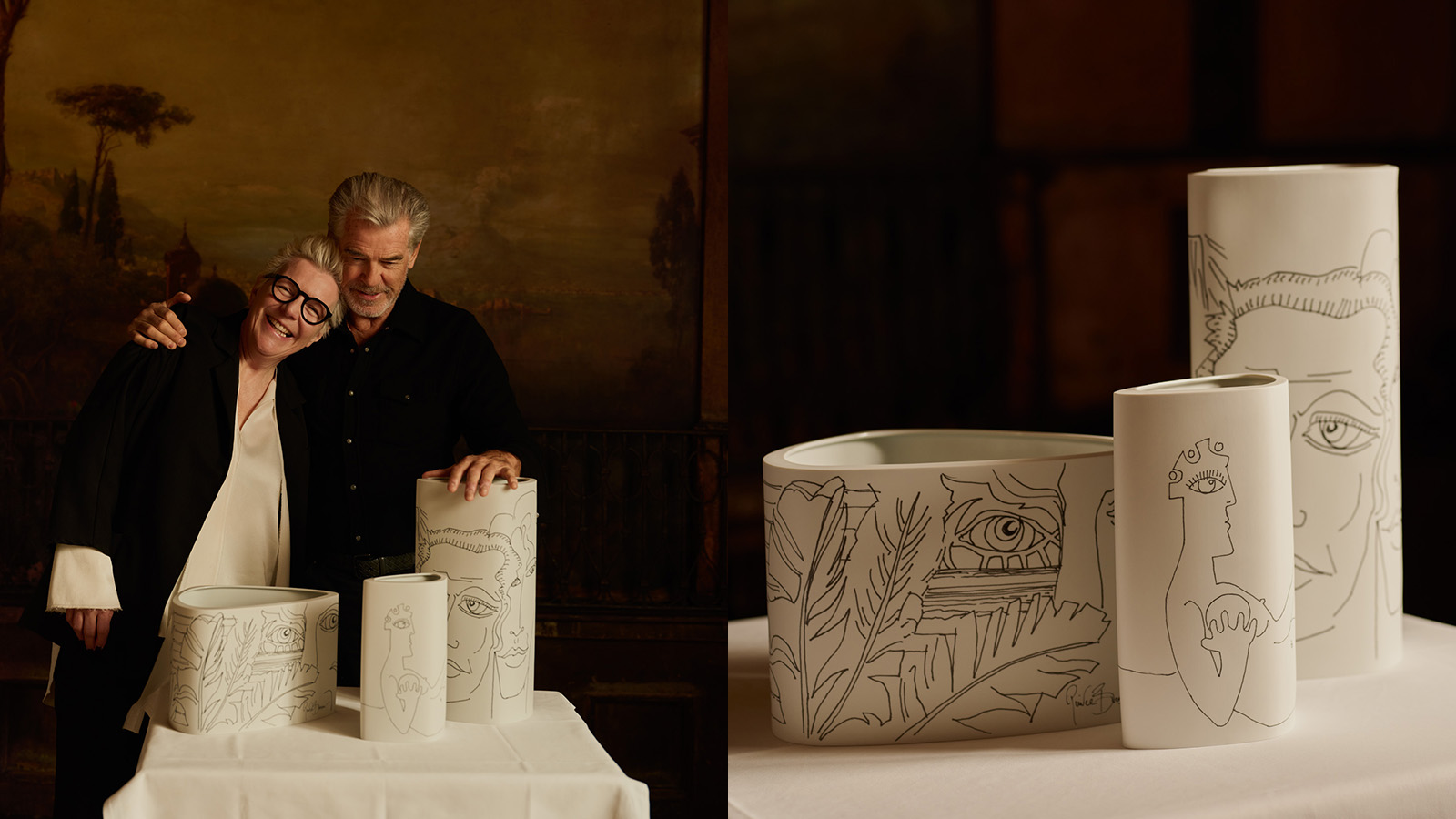 Pierce Brosnan and Hering Berlin's ceramic vases explore love, loss and renewal
Pierce Brosnan and Hering Berlin's ceramic vases explore love, loss and renewalActor and artist Pierce Brosnan translates his ‘So Many Dreams’ artworks to Hering Berlin ceramic vases in a new limited edition
-
 Ceramics brand Mutina stages a poetic tribute to everyday objects
Ceramics brand Mutina stages a poetic tribute to everyday objectsDesign meets art as a new Mutina exhibition in Italy reframes the beauty of domestic stillness, juxtaposing ceramics, sculpture, paintings and photography